- What’s an Inland Beach Vacation?
- Go Go Go
- Shanghai, Xitang, Wuxi
- A Jiangnan Homecoming
- Xian the Ancient Capital
- Xian & Its Glory
- (Other) Foods
- (Muslim Street) Foods
I love places that take pride in their history, and take care in preserving what their ancestors had passed down. On the other hand, dated treasures can get in the way of modernization. For example, I absolutely love Venice and Bruges, two cities that are so well maintained, that immersing in them instantly brings you back 800 years. However, as they don’t make room for transit systems, car-friendly roads, concrete structures, or elevators, I sort of feel bad for their residents for being “stuck” in a historic period.
This was something I wondered about Xian. After all, it’s home to one of the world’s best preserved ancient city walls. These isolationist structures are a huge inconvenience as cities expand to modern scales. As such, from Beijing to London to Seoul, people have been tearing them down to make way for roads and other things. In Xian, despite having tripled the number of gates over the past 100 years to enhance traffic flow, the old city wall still separates the “inside” and “outside” of its former life. More than the physical barrier, I wondered how having the reputation of being ancient affects its residents’ mentality in the 21st century.
I don’t have answers, but I was intrigued to see how “alive” Xian was. The old and the new coexisted peacefully. In fact, the city had embraced its history, capitalized on its many artifacts, and in many ways summoned its past glory to a new life.
Traditional-Styled Structures
Xian had a lot of traditional Chinese houses. Many of them were probably restored or new constructions, but nonetheless create appealing aesthetics.

Tiled rooftops
Better yet, some architects decided to top their large, modern, concrete structures with traditional-styled towers. Neato!
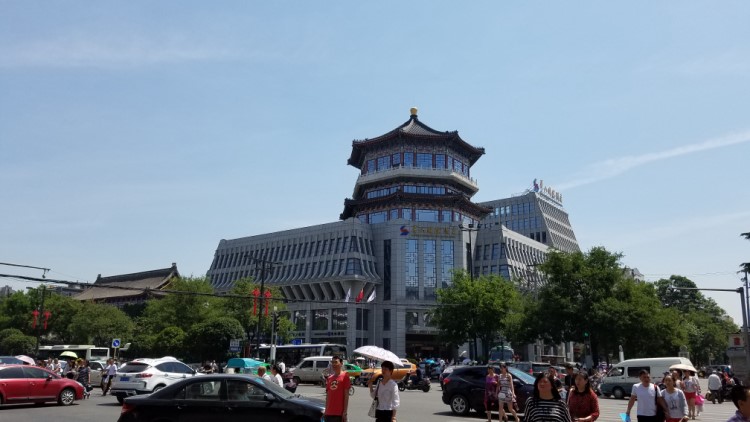
Some hotel just inside the North Gate
Hilton Xian
Xian had quite a few hotels that advertised in-your-face Tang Dynasty decor, which I was super interested in. We chose Hilton for its relatively convenient location, and was surprised to find out that (while its exterior is a super boring mega American chain hotel) it had a full display of Qin and Tang era art. There was definitely no mistaking this property for any other Hilton around the world.

Giant mural behind the reception
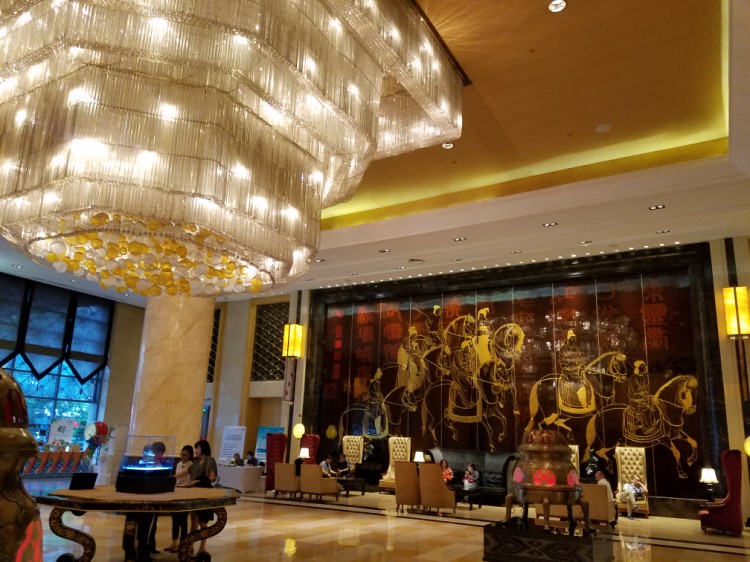
The other end of the lobby had wood carving-styled portrayal of some horses.
The antique-styled giant pots were a nice complement to the monstrous chandelier.
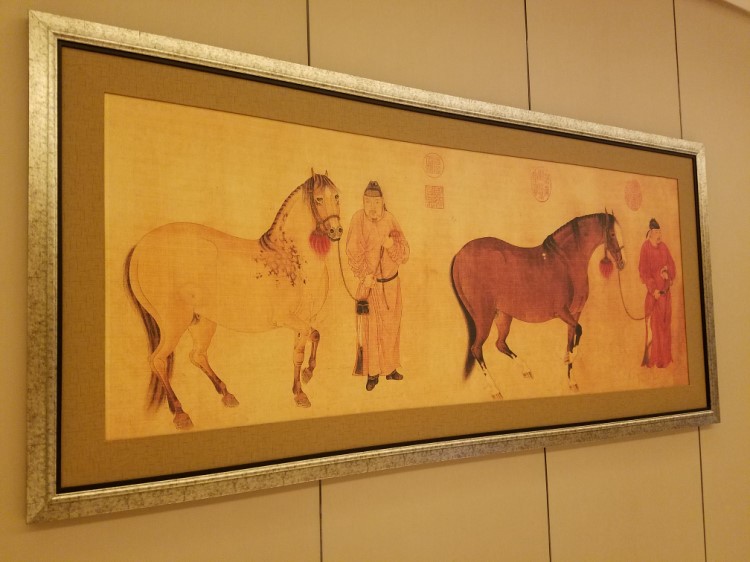
Replica of what was presumably a famous painting.
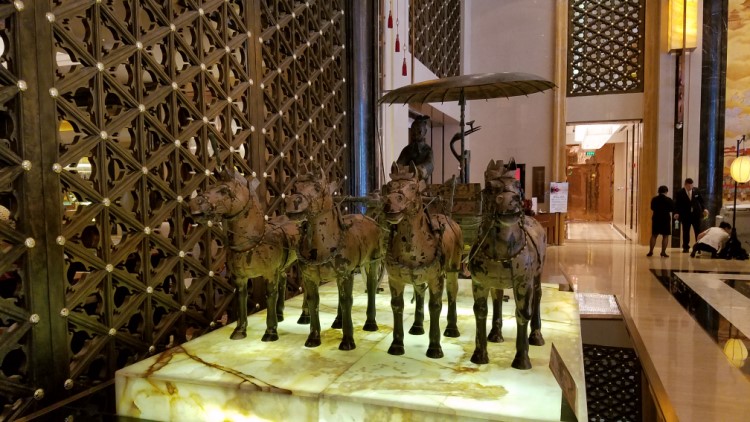
Model of the bronze chariot unearthed from the First Emperor’s tomb.
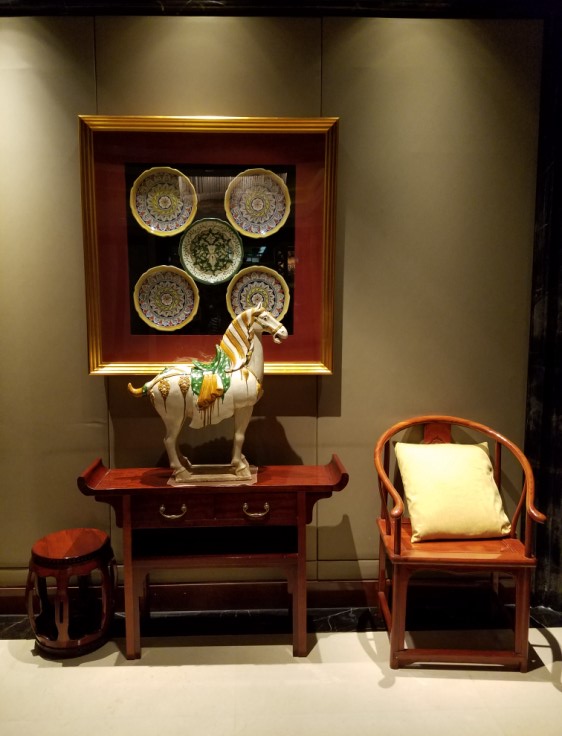
Tang-styled ceramic horse statue and plates.
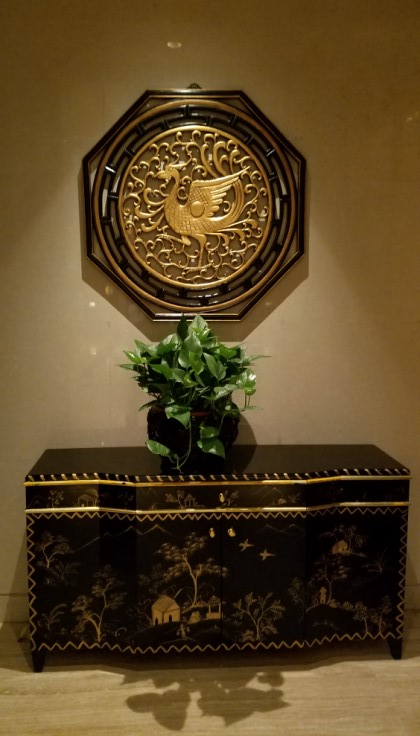
Whatever this was, it was gorgeous. I’d like one in my bathroom.
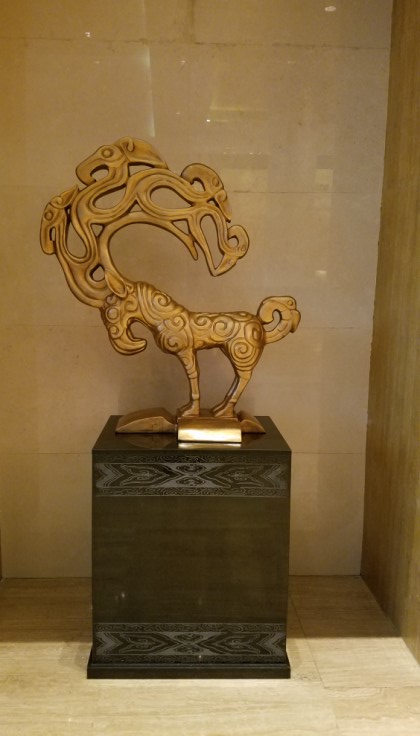
Never mind. I want this instead. Enlarged replica of “Golden Beast”, an artifact from the region dating back 2,300+ years.
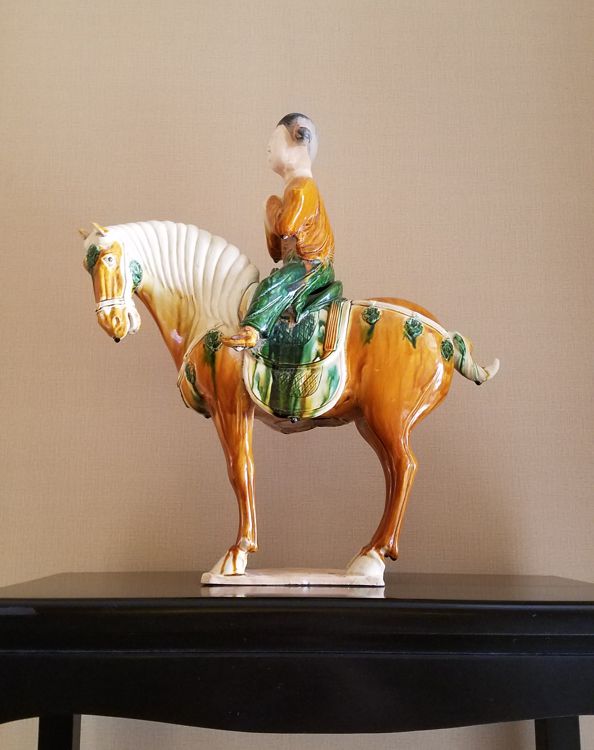
Another Tang “3 color” horse statue, in our room.
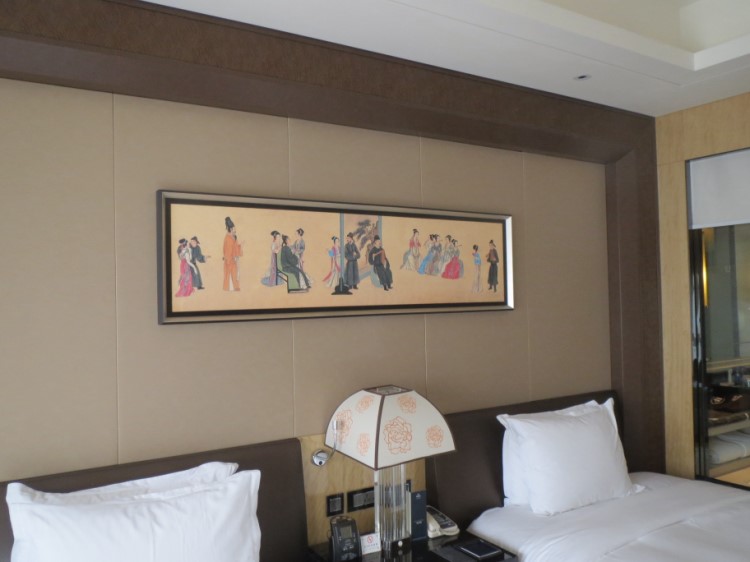
A painting replica in our room.
Yong Xing Fan (永興坊)
Part theme park, part food court, this city block just inside the eastern wall was a destination for all your senses… though the focus was on food. Every kind of regional specialty food that I knew of, and more that I had never heard of, was represented here. Lots of props, educational materials, and even a stage for performances (old man singing in the Shaanxi dialect; not the Shen Yun kind of show). Despite the area having a 200-year-old look and feel, all transactions were cashless with a reloadable card.
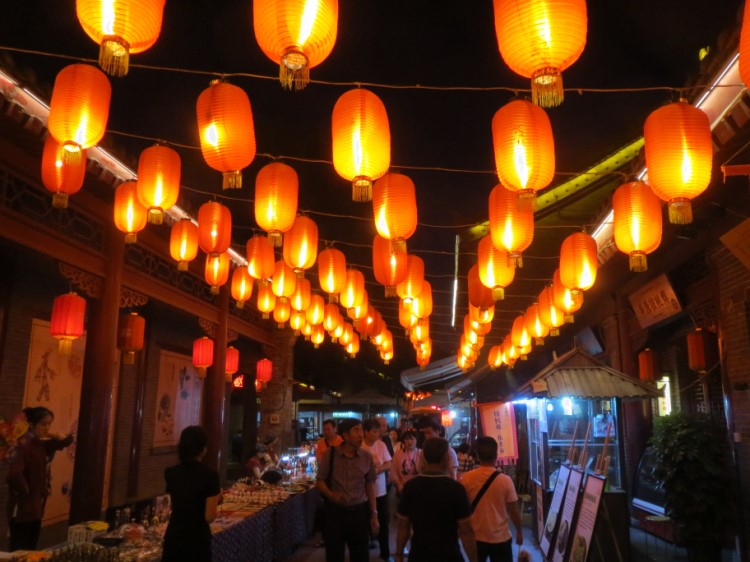
Red lanterns!
Ming Dynasty King of Qin Palace Wall
The “King of Qin”, son of the first Ming emperor around 650 years ago, ruled Xian and made the city layout as it is today. His palace took up a substantial portion of the city, and had its own walls. They were obviously not as serious as the outer walls, but already taller/thicker than many cities’ actual defense systems. Only portions remain today.
Fun fact: Ming’s founding emperor was famous for building walls.
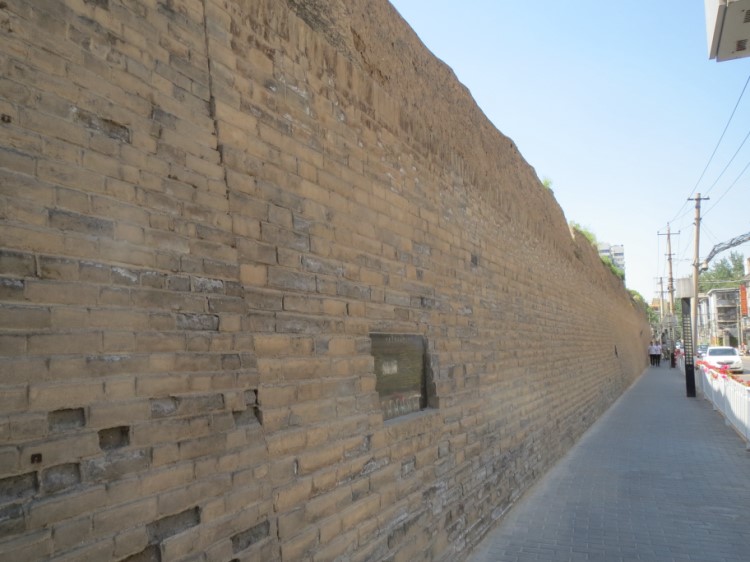
On the other side of this was an elementary school.
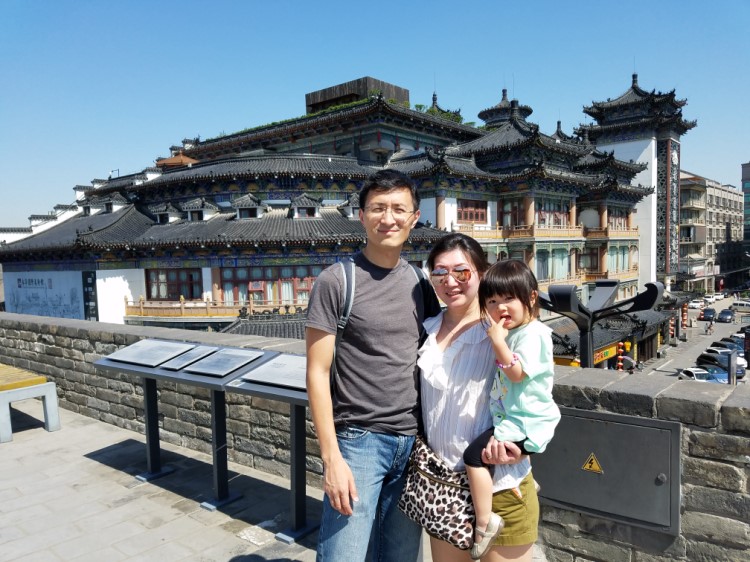
An Inland Beach Vacation (1/8) – What’s an Inland Beach Vacation? – Peter's Blog
June 15, 2017 at 1:37 am[…] Xian & Its Glory […]